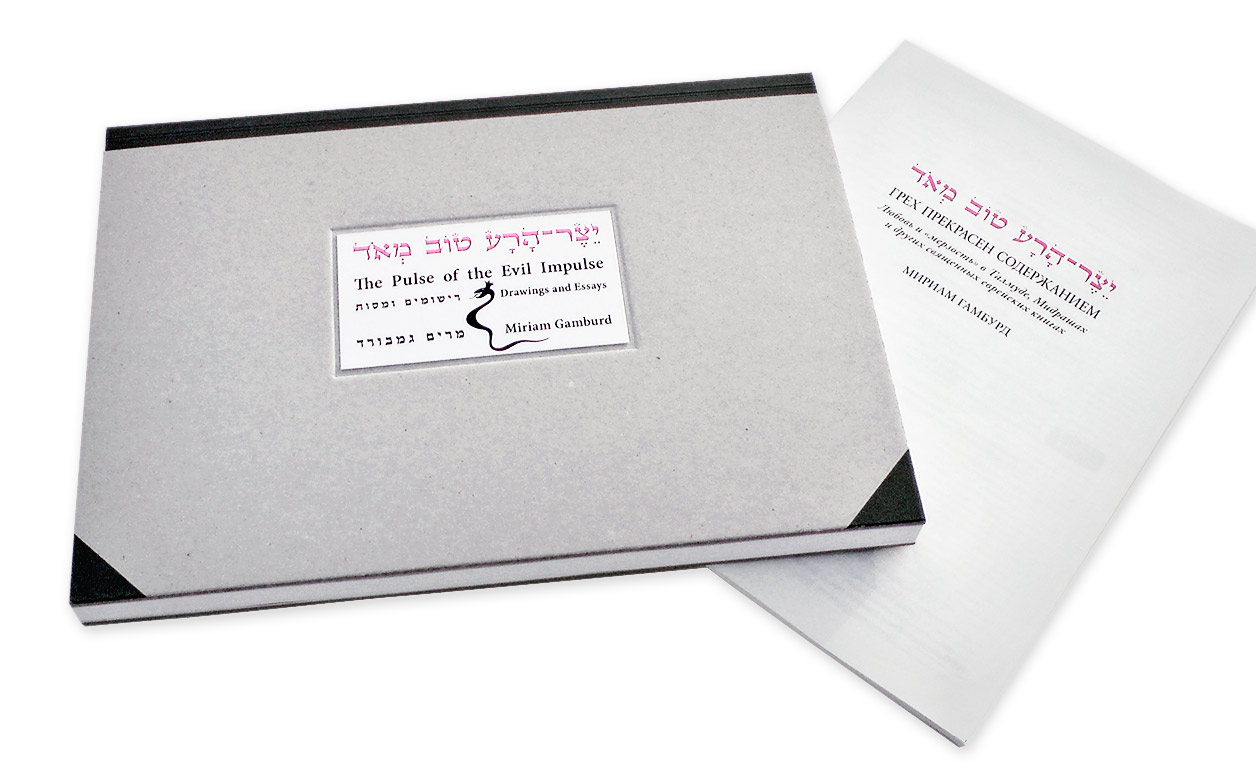Miriam Gamburd’s book “The Pulse of the Evil Impulse” (Love and Abomination in the Talmud and the Midrashim and additional books included in the Jewish canon), is a courageous and fascinating attempt to visualize selected segments from the Hazalistic literature; in the main, for the first time. Juxtaposed with her striking drawings are essays written by the artist that shed light on current problems in the mutual relationship between Judaism and art, eroticism and sin within Israeli culture. Miriam Gamburd’s original approach to these controversial themes is surprising, profound and, at times, astounding.
The drawings are executed in various styles and techniques to perfection. The artist’s pencil touches upon intimate and even pornographic texts from the Talmud and Midrashim, and Jewish lore is combined with universal culture. In Gamburd’s essays, there are amazing discoveries, the most important being the cherubim in the Holy of Hollies of the temple: “Two figurative sculptures of cherubim were placed in the Holy of Holies, and thus a number of severe prohibitions were breached: the prohibition against sculpting in general, the prohibition against the visual portrayal of a human face, and the prohibition against the visual portrayal of angels as creatures of the supreme sphere (Tosfos, Yoma 54b). The latter is as severe as the prohibition against the visual portrayal of God. In the Holy of Holies these prohibitions are outwardly breached. Bringing in sculpting, a clearly pagan characteristic, into the Holy of Hollies – the epicenter of monotheism, turned out to be an essential need stronger than all the prohibitions. To this day this fact is embarrassing to researchers of Judaism, who often prefer to evade the subject.”
The book does not deal with historization of the text, but is rather, as in the description of Roland Barthes, an adventurous textual fantasy.
In Miriam Gamburd’s words: “I will try to portray another version of Judaism’s relationship with art in the form of an allegorical conflict between a Lady and a servant-woman (master and slave). The name of the servant-woman is Art, the Lady of the House – Judaism. Judaism sees this servant-woman as a pagan illiterate. The servant flourishes in idol-worshiping surroundings where orgies and human sacrifice take place. The Lady would never herself employ this harlot in her home, but not for the obvious reason that this harlot would surely corrupt the sons of the household and lure them to sin. Judaism predicts such a development of events and it does not trouble her. She anticipates the situation and takes action to prevent its development into one where the servant-woman receives her freedom and will threaten the place of the Lady. this will not come to pass!”
